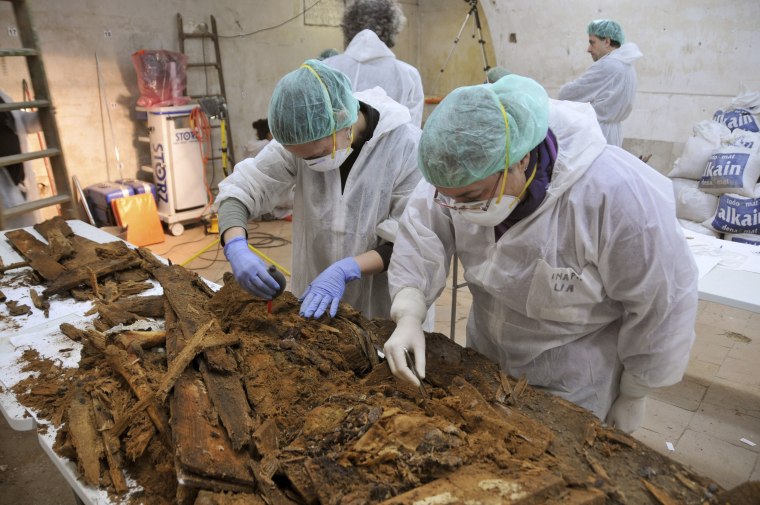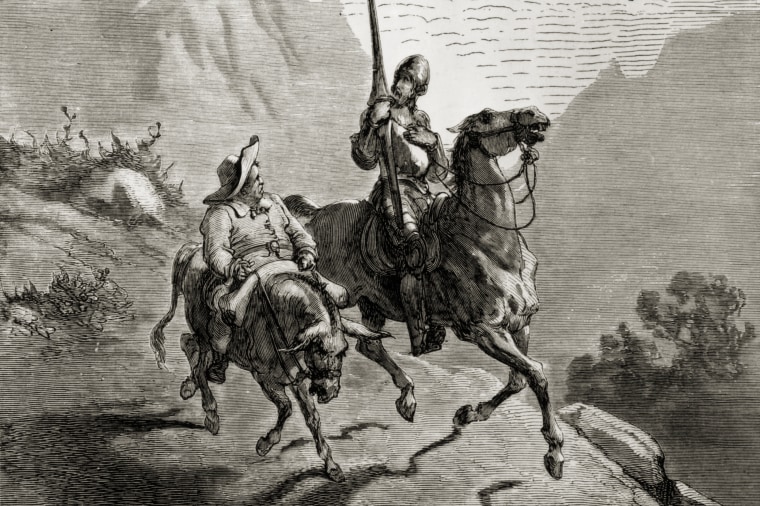Today, people all over the world will honor the Spanish novelist Miguel de Cervantes, who died 399 years ago on April 22, 1616. Since then, many readers have connected with the writer and his books, sometimes becoming an obsession.
Early this year, forensic scientists combed the subsoil of a convent in Madrid with the hope of digging up the Spanish novelist’s remains. But even if the bones don’t prove to be real, Cervantes will always be remembered as the famous author of Don Quixote, a sad but funny novel about a wandering knight whose adventures are still being translated into many languages four centuries later.
“We all dream of a different life,” writes Amherst College professor and writer Ilan Stavans in his new book “Quixote: The Book and the World,” which will be published in September. “We all want to be someone else. Don Quixote is such an appealing character because he acts on that dream.”
Different generations have claimed Cervantes and his most popular characters — Don Quixote and his sidekick Sancho Panza — as symbols for their politics, beliefs and identity. Stavans explained in a phone interview with NBC News that readers treat the novel like an “open book with blank pages” because depending on where they are in life, they can see themselves reflected in different ways.
“We might have not written Don Quixote, but we can supersede Cervantes in originality by doing something [today] with the novel that he didn’t see [then]… we can do something great with what we inherited,” Ilan Stavans, author.
And as each new generation rediscovers and reinterprets Cervantes, Don Quixote becomes a mirror, a snapshot of the way values and ideas are passed down.
“We might have not written Don Quixote,” Stavans said, referring to Latin American writers, “but we can supersede Cervantes in originality by doing something [today] with the novel that he didn’t see [then]… we can do something great with what we inherited.”
This spirit of innovation, the desire to build upon the past, keeps Cervantes relevant, and transforms Don Quixote from a novel into a modern-day handbook for life.
“The novel describes how many Latinos [and Americans] see the world today,” Stavans said. Don Quixote shows how they want to improve their past, educate themselves, and look for books that can help them explain who they are and who they want to become.

While Cervantes is regarded now as the father of the Spanish language, he spent most of his lifetime as a loser, an outsider, a poor, struggling writer who ventured from city to city to make ends meet. But these personal failures have also made the Spanish author and Don Quixote popular with new readers.
At a time when comic books push underdogs into mainstream success, young readers relate to Don Quixote because he is the prototype of the modern superhero — a man who created a new identity, made his own armored costume, and fought to change the world into a better place.
And because so many readers identify intensely with their favorite books and characters, it is only natural that Cervantes fans refuse to let Don Quixote die, that they too want to keep their heroes alive.
This is why a historian, a geophysicist, and a team of forensic scientists in Madrid have set out on an obsessive quest to dig up Cervantes’ remains. But unearthing the Spanish novelist’s bones could also have a downside.
“We don’t have that many things that locate Cervantes in a particular place,” said Stavans. “He belongs to everywhere and nowhere because he has no real address.” And if his remains prove to be real, they could take away from the mystery that calls to the imagination of so many readers.
In either case, recovering Cervantes’ body almost 400 years after his death is an epic undertaking that Don Quixote himself could not turn down. And in many ways, finding the Spanish novelist’s remains can substantiate the ideals and dreams of his readers—transforming their imagination into a geographical place.

